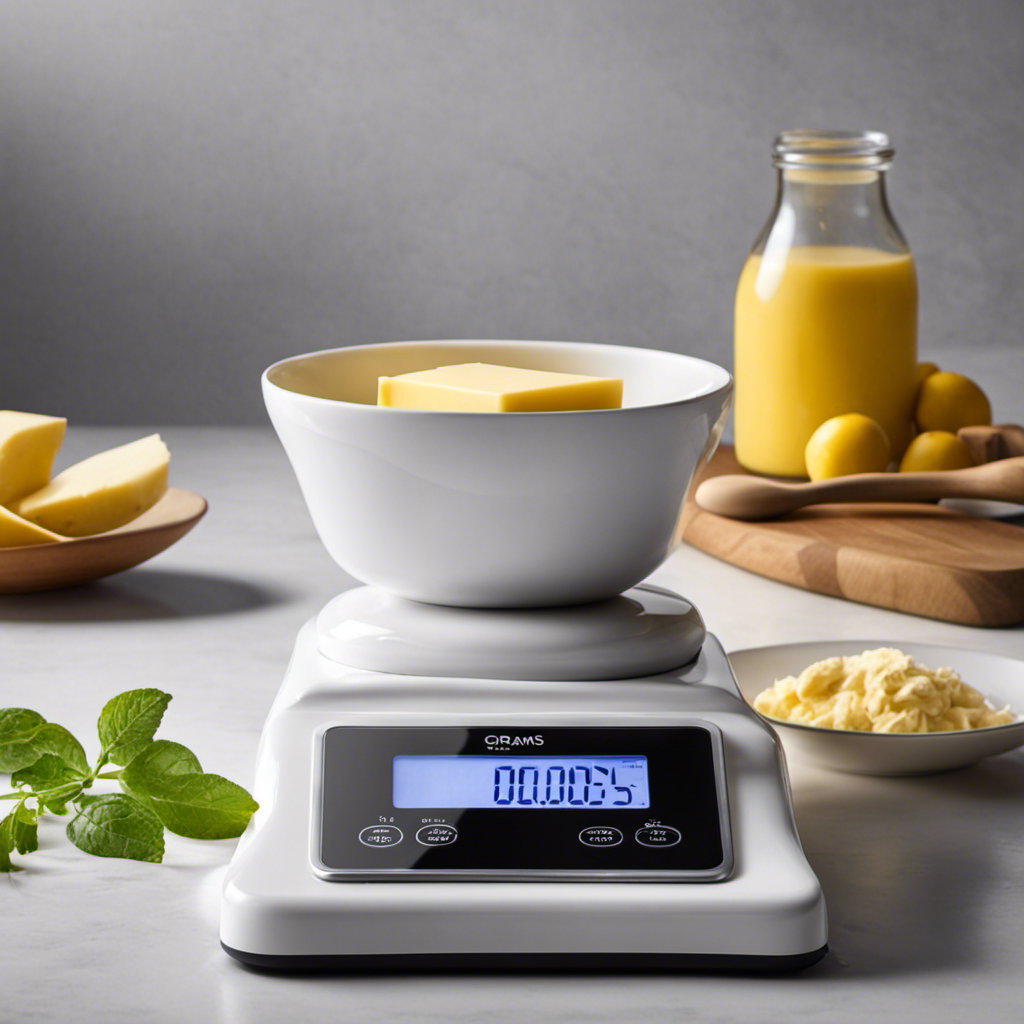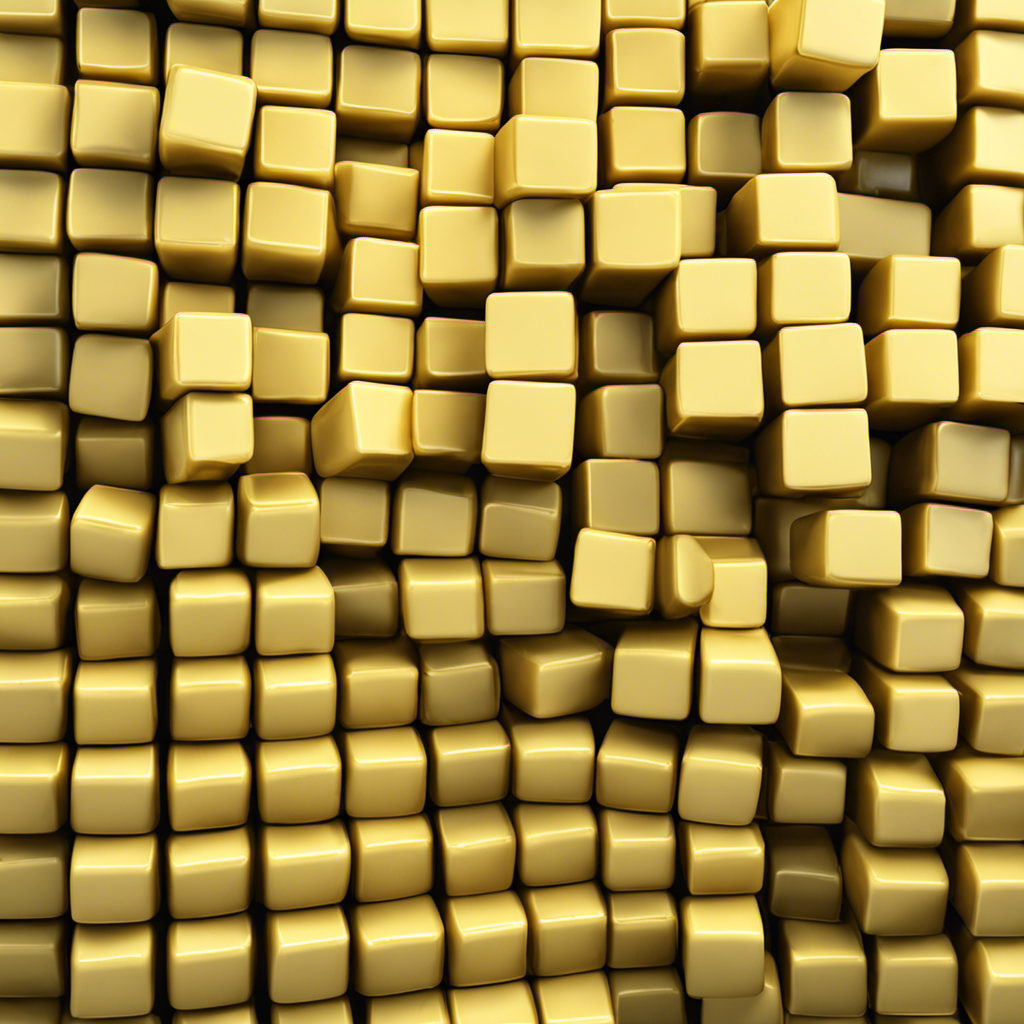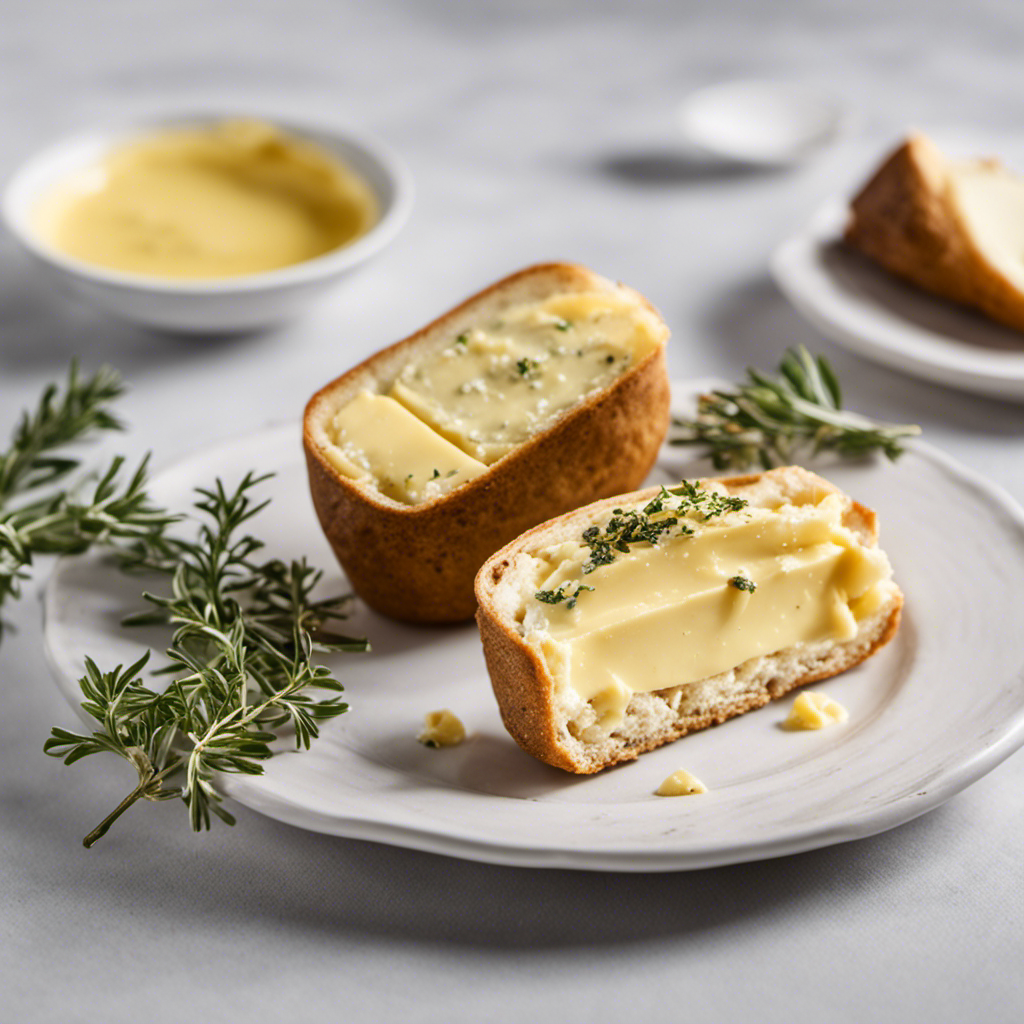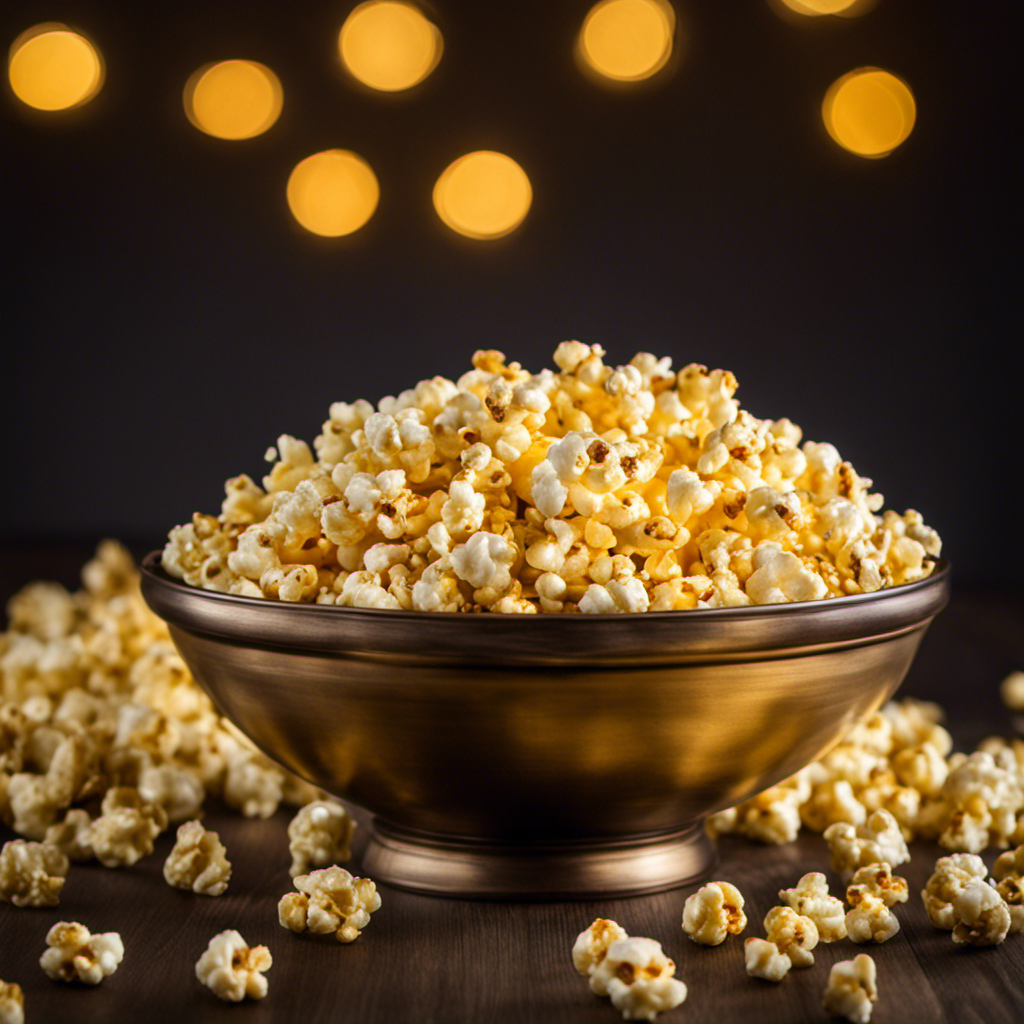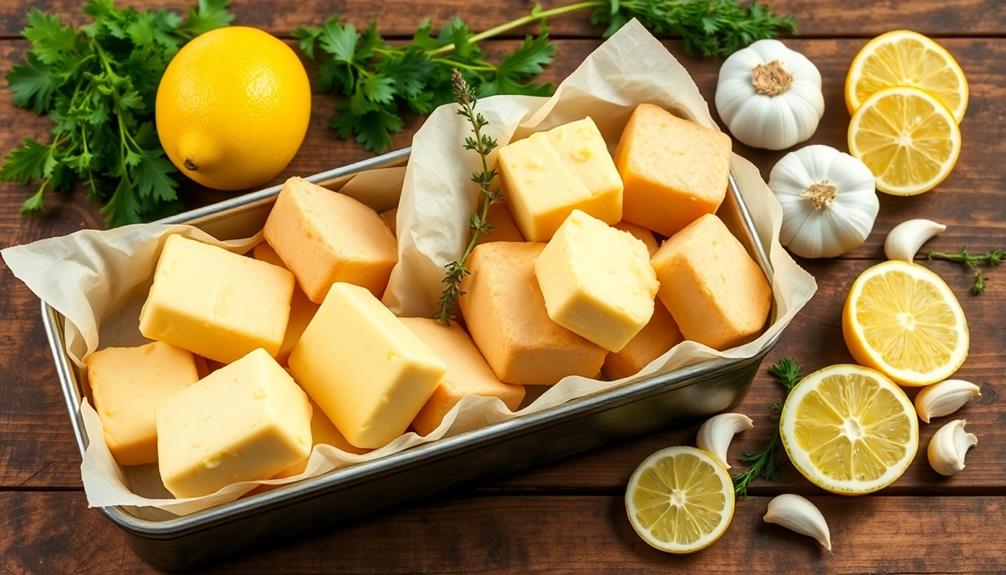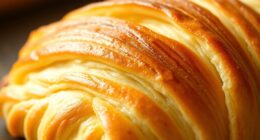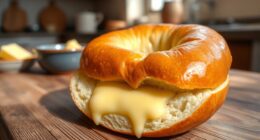Were you aware that about 5 tablespoons equal 30 grams of butter?
If you’ve ever found yourself in the kitchen, trying to convert grams to tablespoons, then this article is for you.
In this informative guide, I will walk you through the conversion ratio, explain the difference between tablespoon and gram measurements, and provide you with step-by-step instructions on how to measure butter in tablespoons.
So, let’s dive in and unravel the mystery of converting 30 grams of butter to tablespoons.
Key Takeaways
- 30 grams of butter is equivalent to approximately 2 tablespoons on average.
- Butter substitutes like margarine, coconut oil, or vegetable shortening can be used but may affect the taste and texture of the dish.
- Familiarity with common cooking measurements is important for accurate conversions.
- Measuring butter in tablespoons allows for easy conversion and portioning.
Understanding the Conversion Ratio
To understand the conversion ratio, you’ll need to know how many tablespoons are in 30 grams of butter. In cooking, it’s important to be familiar with common cooking measurements and know how to convert between different units.
When it comes to butter, tablespoons are a commonly used measurement. Generally, 30 grams of butter is equivalent to 2 tablespoons. However, it’s worth noting that this conversion can vary slightly depending on the density and temperature of the butter.
Additionally, if you’re looking for butter substitutes, there are several options available such as margarine, coconut oil, or vegetable shortening. These substitutes can be used in the same way as butter, but keep in mind that they may affect the taste and texture of your dish.
Converting Grams to Tablespoons
There’s a simple way to convert 30 grams of butter into tablespoons. By using a conversion ratio, you can easily determine the equivalent measurement in tablespoons.
One of the benefits of using tablespoons for measuring ingredients is that it allows for more precise measurements, especially when dealing with small quantities like butter.
To convert other common ingredients from grams to tablespoons, you can use conversion charts or online calculators. These tools provide accurate measurements for a wide range of ingredients, including flour, sugar, and spices.
However, it’s important to note that tablespoon measurements may vary slightly depending on the ingredient being measured. So, it’s always a good idea to double-check your conversions and adjust accordingly.
Now, let’s explore the differences between tablespoon measurement and gram measurement.
Tablespoon Measurement Vs. Gram Measurement
When measuring ingredients, it’s helpful to understand the differences between using tablespoon and gram measurements.
Let’s start with the pros and cons of using tablespoon measurement for cooking.
The advantage of using tablespoons is that it’s a common measurement tool found in most kitchens, making it convenient and easily accessible. Additionally, using tablespoons allows for easier portion control and measuring smaller quantities of ingredients.
However, there are some drawbacks to using tablespoons. Firstly, it may not be as precise as using grams, especially when it comes to ingredients with varying densities. Secondly, different ingredients have different densities, so measuring butter in tablespoons differs from measuring other ingredients in grams.
Butter is a solid fat, which means its density is higher compared to liquids or powders. This means that when measuring butter in tablespoons, you may end up with a slightly different weight compared to measuring it in grams. Therefore, it’s important to consider the differences in density when using tablespoon measurements for butter and grams for other ingredients.
How to Measure Butter in Tablespoons
Measuring butter in tablespoons can be a convenient way to portion it for recipes. To measure butter accurately, follow these steps:
- Soften the butter by leaving it at room temperature for about 30 minutes.
- Use a sharp knife to cut the desired amount of butter from the block.
- Pack the butter into a tablespoon, making sure to remove any air pockets.
- Level off the butter with a straight edge, such as a knife or spatula.
By measuring butter in tablespoons, you can easily convert different butter measurements. For example, if you need to convert 30 grams of butter to tablespoons, you can use a conversion chart or online calculator. This will give you an accurate measurement to use in your recipes.
Converting 30 Grams of Butter to Tablespoons
To convert 30 grams of butter to tablespoons, you can refer to a conversion chart or use an online calculator for an accurate measurement.
Converting butter measurements can be tricky because different countries use different units of measurement.
In general, 1 tablespoon of butter is equal to 14 grams. So, to convert 30 grams of butter to tablespoons, you divide 30 by 14. The result is approximately 2.14 tablespoons.
However, it is important to note that this is an approximate measurement and may vary slightly depending on the density of the butter.
If you need a more precise measurement, it is recommended to use a kitchen scale or a conversion chart specifically designed for butter measurements.
Frequently Asked Questions
Can I Use Any Type of Butter to Measure 30 Grams?
Yes, you can use any type of butter to measure 30 grams accurately. However, keep in mind that different types of butter may have varying densities, so it’s best to use a kitchen scale for precise measurements.
How Do I Convert Tablespoons to Grams?
Converting tablespoons to grams can be tricky, but there are conversion charts available that make it easier. I’ll explain the process and provide the necessary information. Just follow along!
How Many Calories Are in 30 Grams of Butter?
The calorie count and nutritional value of 30 grams of butter can vary depending on the brand and type of butter. It’s important to check the packaging or use a nutrition calculator for accurate information.
Can I Use a Digital Scale to Measure Butter in Grams?
Using a digital scale to measure butter accurately is a great idea. To convert grams to tablespoons for different types of butter, you can refer to a conversion chart or use an online calculator.
Can I Substitute Margarine for Butter in the Conversion Ratio?
Substituting margarine for butter in recipes has its pros and cons. Different types of margarine have different uses, such as baking or spreading. It’s important to consider the taste and texture you want to achieve in your dish.
Conclusion
So, in conclusion, understanding the conversion ratio between grams and tablespoons is essential when it comes to measuring butter accurately.
Converting 30 grams of butter to tablespoons can be done by knowing that 1 tablespoon is approximately 14 grams. Therefore, 30 grams of butter would be around 2.14 tablespoons.
To put this into perspective, imagine a small dollop of creamy butter melting on a warm slice of freshly baked bread. Just like the butter spreads smoothly and evenly, the knowledge of conversion ratios allows us to measure ingredients precisely, resulting in delicious culinary creations.
